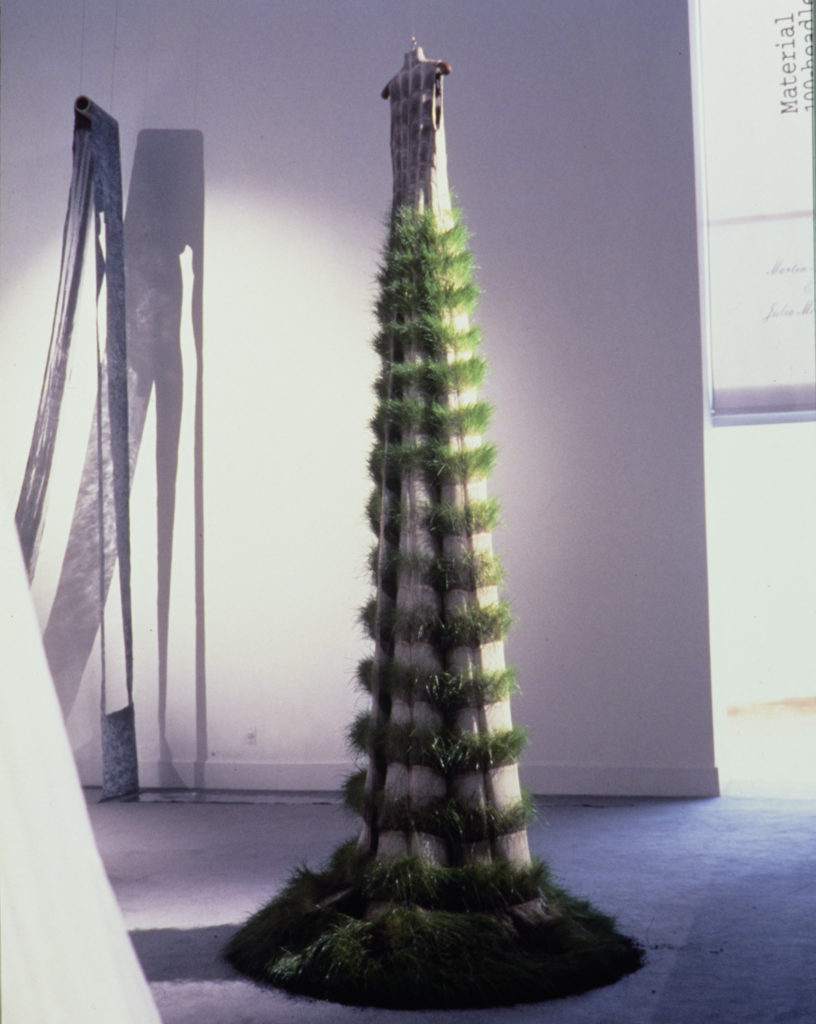PARTNER Govett-Brewster Art Gallery, New Plymouth OTHER VENUES Govett-Brewster Art Gallery, 25 October–8 December 1997; Artspace, Adelaide Festival Centre 2–21 March 1998; Selfridges Department Store, London; Judith Clark Costume Gallery, London; Jardins Secret, L'Hôpital Charles Foix, Paris, May–June 2001 FUNDING Creative New Zealand PUBLICATION essays Allan Smith, Anna Smith
Material Evidence: 100-Headless Woman is a collaboration by New Zealand artist Julia Morison and Australian fashion designer Martin Grant. Inspired by the surrealist Max Ernst’s pioneering collage-graphic novel, The Hundred Headless Woman (1929), they have created ten dresses for Ernst’s headless woman to wear. Morison works with a lexicon of qualities and materials based on occult philosophy, particularly on the ten-part kabbalist sefirot (tree of life).
Earth is a muslin shift with layers of pockets filled with earth and grass seed. Over the course of the show, the pockets sprout grass to form a hilly mass. Ash has no dress, but a burnt hanger and charred pair of shoes stand in its place, suggesting a potentially self-destructive end in the pursuit of beauty. Vast yardage of blood-stained muslin is splayed out to create the largest piece in the show—Blood.
In the catalogue, Allan Smith writes: ‘Premised on a world of fluid and shifting identities, fashion becomes expressive of psychic change, of subjectivity in extremis, of fears, phobias, and nameless desires’.

























